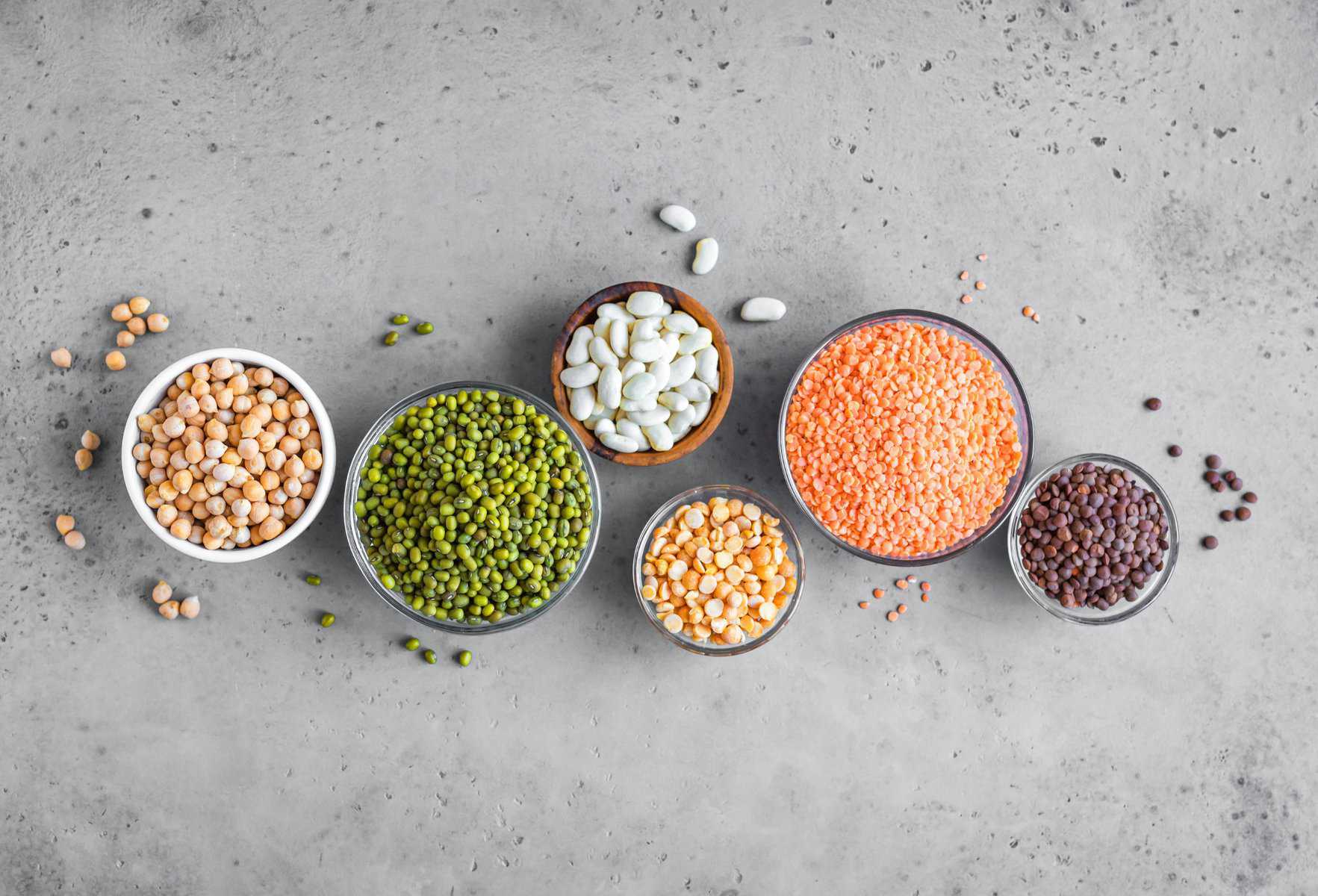 Legumes are a great option for including in your diet. They tick so many boxes: plant-based protein source, high in fibre, and rich in micronutrients such as iron, magnesium, potassium, and folate, and they are low cost to boot. But if you’ve never really eaten them before, it can be a hard to know what to do with them.
Legumes are a great option for including in your diet. They tick so many boxes: plant-based protein source, high in fibre, and rich in micronutrients such as iron, magnesium, potassium, and folate, and they are low cost to boot. But if you’ve never really eaten them before, it can be a hard to know what to do with them.
Sometimes referred to as “pulses”, legumes are one of the most versatile sources of plant proteins.
Examples of legumes include chickpeas, lentils, black beans, kidney beans, soybeans, edamame beans, cannellini, or white beans, and peas. They can be used for many things and are simple to prepare and cook, so it is worth giving them a go.
So why should I have more legumes in my diet?
There is a growing body of evidence to support the inclusion of more plant foods in our diets, including legumes. And while they are a great source of vegetarian proteins, this doesn’t mean you need to be vegetarian to get the health benefits of including more in your diet (1, 2 ). Some of the benefits may include:
- High in fibre for good gut health: one half cup serving contains a whopping 7-9 grams of fibre
- Reduced gut inflammation and improved intestinal microbiota
- Improved cholesterol, especially if legumes are consumed instead of red meat
- Reduced blood pressure
- A source of iron, which is great for those who suffer from iron deficiencies
- Low GI (glycemic index) source of carbohydrates
- Reduced blood sugar levels in people with Type 2 Diabetes
- Reduced risk of colorectal cancers
- Rich in several vitamins and minerals to support general health including iron, magnesium, copper, manganese, zinc, phosphorous, and several B vitamins.
In addition to being nutritious, legumes are also super cheap, making them a great way to increase your intake of plant-based foods without impacting on your grocery bill. In fact, swapping to legumes could save you some money. For example, using lentils in a bolognaise instead of mince can be up to $9.70 cheaper for that meal.
I’m in! Do I buy them dried or canned?
There are two options for buying legumes. You can buy them dried or in a can. When deciding which one, check the recipe that are using. If you are going without a recipe or it doesn’t specify, then opt for canned ones. This is the simplest way to use legumes. Canned legumes are already cooked for you, so they can be used straight out of the can without having to worry about cooking them. Canned legumes are soaked in a brine that can be quite smelly; this is to stop them from going off in the can. To use, simply drain the can into a strainer or sieve, and rinse under cold water until they don’t smell anymore.
If buying your legumes dried, it is important to follow the instructions in a recipe for soaking and cooking them.
Some legumes contain a toxin called phytohaemagglutinin (try saying that three times fast!) that can cause a very upset tummy if not cooked properly.3 But just like other foods that aren’t great raw, cooking legumes destroys the toxin, so you won’t get sick if they are cooked properly.
Sounds great, so what can I use them for?
There are so many uses for legumes! They are probably the most versatile plant protein as you can do so much with them! Here’s some ideas to get you started:
Lentils
Lentils can be used to make a soup more filling and can even act as a thickener if blended into a soup. They can be used instead of mince in a lasagna or bolognaise. Or you can include them in a salad, such as this Calamari with Greek Lentil Salad or Haloumi and Lentil Salad.
Chickpeas
Chickpeas can be a great addition to a salad, either straight out of the can like in this Herbed Chicken and Chickpea Salad or toasted for a bit of extra crunch. They work well in stews and curries, such as this Pumpkin Chickpea and Coconut Curry. Chickpeas also make a great snack. You can buy them dried with different flavours (usually found in the health food aisle at the supermarket) or you can roast them in the oven yourself with some spices.
Cannelini beans/white beans
Cannelini beans are sometimes also called white beans. They work well in warming winter stews like this Slow Cooker Chorizo and Fennel Stew or in a salad. They work well in soups, such as a pumpkin and white beans soup or this Sweet Potato and Leek Soup and as a side to a one-pot baked dish, such as Chicken and White Bean Parcels or One Pan Salmon and Vegetables. Cannelini beans can also be mixed with mashed potato and used on a cottage pie for some extra fibre. And, cannellini beans make a great sandwich or toast topper. Simply rinse, mash with some avocado and add a little squeeze of lemon.
Kidney beans
Kidney beans work well in salads, but where they really shine is in Mexican foods. Use them instead of, or as well as, the mince in your taco kit, or try out these Tasty Tacos or Beef and Bean Burritos. Kidney beans also work well in scrambled eggs, salads, pasta, casseroles, or rice dishes.
Black beans
Black beans are another legume that work well in Mexican foods. Think Mexican Bowls, Vegetarian Quesadillas, or even a delicious Breakfast Burrito.
Still feeling unsure?
These ideas are just some of the ways that you can use legumes, and there are millions of recipes online and in recipe books that you can try out. If you would like more advice on including healthier foods like legumes in your diet or are looking to go plant-based and not sure where to start, book in with a dietitian for advice that is tailored to you.
Dietitian Sian Hopkins has a particular passion for teaching people how to maximise their nutrition through a plant-based diet.
References:
- Polak R, Phillips EM, Campbell A. Legumes: Health Benefits and Culinary Approaches to Increase Intake. Clin Diabetes. 2015;33(4):198-205. doi:10.2337/diaclin.33.4.198
- Aranda-Olmedo I, Rubio LA. Dietary legumes, intestinal microbiota, inflammation and colorectal cancer. J Func Foods. 2020;64:1-13. doi:10.1016/j.jff.2019.103707
- Vasconcelos IM, Oliveira JT. Antinutritional properties of plant lectins. Toxicon. 2004;44(4):385-403. doi:10.1016/j.toxicon.2004.05.005



